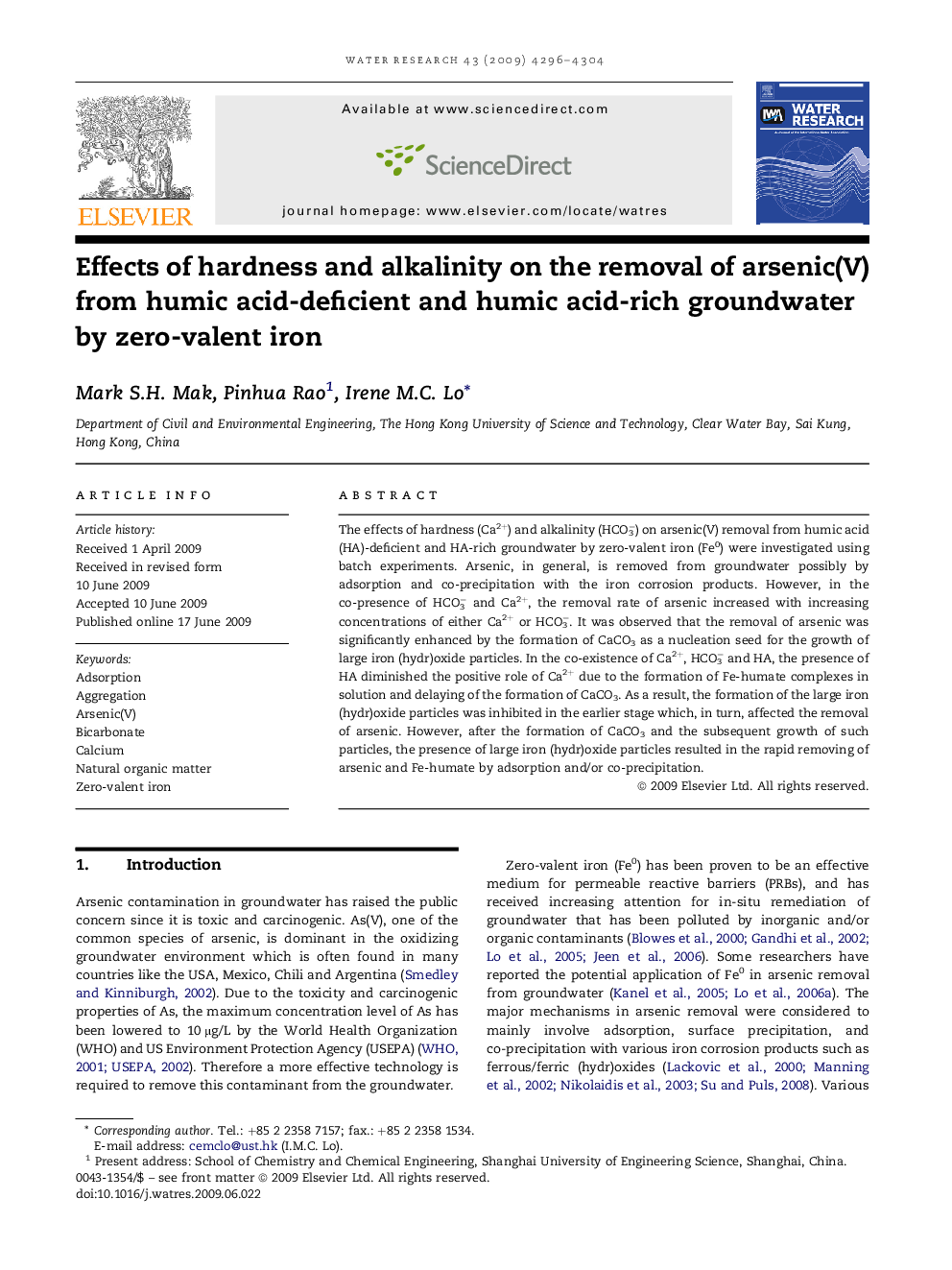| Article ID | Journal | Published Year | Pages | File Type |
|---|---|---|---|---|
| 4483975 | Water Research | 2009 | 9 Pages |
The effects of hardness (Ca2+) and alkalinity (HCO3−) on arsenic(V) removal from humic acid (HA)-deficient and HA-rich groundwater by zero-valent iron (Fe0) were investigated using batch experiments. Arsenic, in general, is removed from groundwater possibly by adsorption and co-precipitation with the iron corrosion products. However, in the co-presence of HCO3− and Ca2+, the removal rate of arsenic increased with increasing concentrations of either Ca2+ or HCO3−. It was observed that the removal of arsenic was significantly enhanced by the formation of CaCO3 as a nucleation seed for the growth of large iron (hydr)oxide particles. In the co-existence of Ca2+, HCO3− and HA, the presence of HA diminished the positive role of Ca2+ due to the formation of Fe-humate complexes in solution and delaying of the formation of CaCO3. As a result, the formation of the large iron (hydr)oxide particles was inhibited in the earlier stage which, in turn, affected the removal of arsenic. However, after the formation of CaCO3 and the subsequent growth of such particles, the presence of large iron (hydr)oxide particles resulted in the rapid removing of arsenic and Fe-humate by adsorption and/or co-precipitation.
